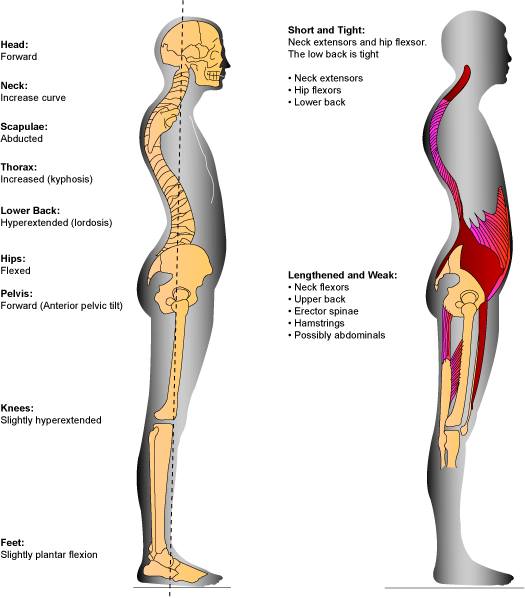Degenerative disc disease is often thought of as part of the normal aging process, but it is more common in individuals who smoke cigarettes and who do heavy lifting or physical work. Being overweight can also put individuals at an increased risk of degenerative disc disease because the spinal column works harder to carry around excess weight and may break down sooner.
Chronic bad posture can also increase the pressure on the spinal column as well.
Degenerative disc disease may occur when an individual experiences a sudden fall and develops a herniated disc as well.
See Disc Problems: Part 1 – Disc Herniation – A NYC Chiropractor/ Applied Kinesiologist / NeuroKinetic Therapist Explains for more information about spinal discs
A contributing factor may be due to the loss of fluids in the spinal discs due to dehydration , which reduces the disc’s ability to absorb shock or act as a cushion. Loss of fluid makes the spinal discs thinner and narrows the amount of space in between the vertebrae. It also causes inflexibility in the spine
The loss of disc height narrows the space between the vertebrae and decreases the space from which the spinal nerve exits. (see image below)
This impingement of the spinal nerve can cause pain, numbness or muscle weakness to the area innervated by that spinal nerve.
But let’s talk about an additional contributing factor in degenerative disc disease; and that is the abnormal spinal mechanics caused by what we chiropractors call a subluxation or spinal joint dysfunction.
The Subluxation/Spinal Joint Dysfunction
Spinal joint dysfunction happens when a vertebrae (or more) is not moving freely in all its possible planes. For example, if the vertebrae is “struck” in its right posterior plane, the rest of the vertebrae compensates by abnormally increased motion in the other planes of the body. This causes increased pressure and a wearing away of the spinal disc.
What is needed is the removal of the “stuck” part or spinal joint dysfunction by a gentle re-alignment to the spine by a doctor of chiropractic such as myself.
How a Combination of Applied Kinesiology, NeuroKinetic Therapy and Chiropractic Works
As I also employ applied kinesiology and neurokinetic therapy techniques, I look for muscle imbalances by using muscle testing to determine what muscles are inhibited and what muscles are compensating (facilitating)for them.
A muscle imbalance can aggravate the spinal j.oint dysfunction by not allowing the release of abnormal joint motion.
A correction of muscle imbalance is part of the treatment for degenerative disc disease as well as increased water intake and anti-inflammatory nutrients.
I use a table that provides flexion distraction and spinal decompression; biomechanically it can open the disc space by 28%; allowing for a gentle release of pressure on the spinal discs.
Think you may have a disc degeneration problem? Please give me a call at 212-431-3724 or email me at drvittoriarepett@aol.com.
And lets talk and see if I can help you.
© 2019-Dr. Vittoria Repetto
Want more information on Dr. Vittoria Repetto and her NYC Applied Kinesiology/Chiropractic./ NeuroKinetic Therapy practice at 230 W 13thSt., NYC 10011; please go to www.drvittoriarepetto.com.
And please check out the Patient Testimonials page at my web site.
Want to be in the know on holistic information and postings? Follow me at https://www.facebook.com/wvillagechiropracticappliedkinesiologynkt/
Or join me at Twitter: www.twitter.com/DrVRepetto




















